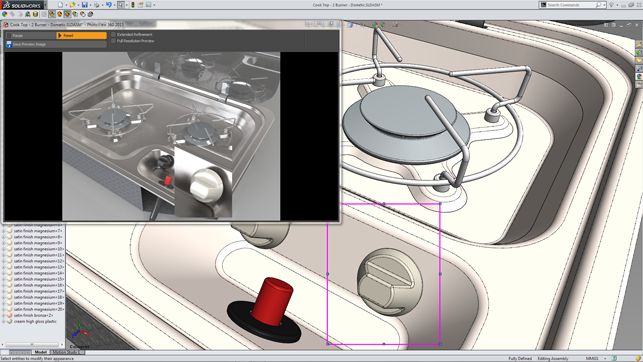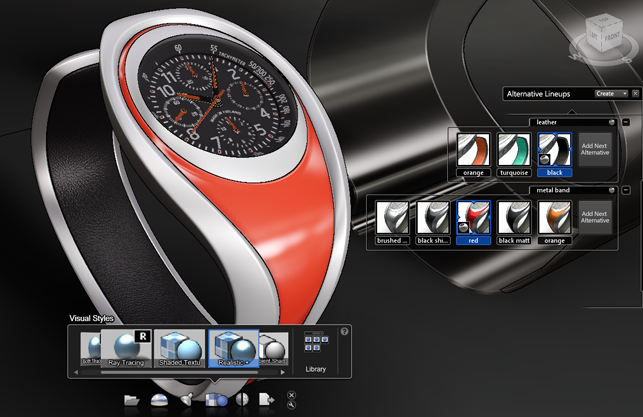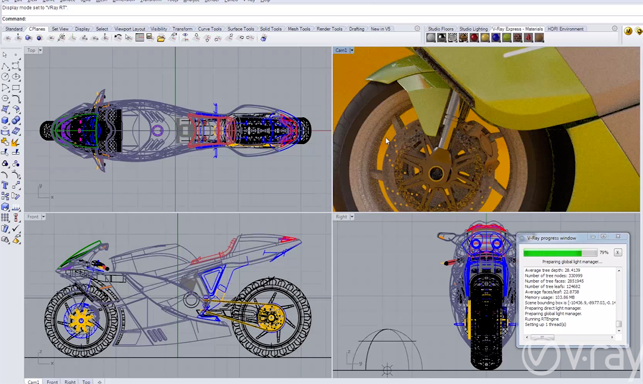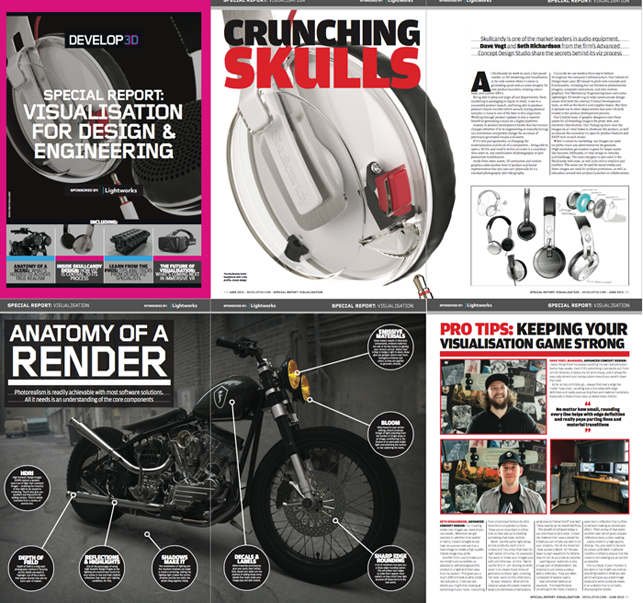
The Basics
Rendering has come a long way, baby. Ten years ago, it was seen as the sole preserve of the industrial design and automotive crowd.
Expert driven, it was an arcane and mystical process to take the raw geometry from a 3D design system and create photorealistic images and animations.
Today, the reality could not be further from this. Many in traditional design and engineering have adopted visualisation as a means of communicating their product’s form and function. Whether for design review, for pre-manufacture marketing or sales promotion.
The Options
Whether you’re looking to keep your rendering inside your CAD system with an integrated solution or to spin things out to a separate system that allows you to farm out the work and the computation, there are many options.
The rise of the physically-based renderer has meant that we’re now used to a more drag and drop approach to material definition. HDR images are making lighting much easier.
That said, there are tips and tricks to taking your imagery to the next level and these apply to the majority of systems and tools available.
The Future
The increase in core count on both your CPU and GPU (for the growing number of renderers that support GPUs) is going to make rendering more and more efficient.
For those that don’t want to invest in hardware or have extremely heavy computational requirements, the cloud is also set play an increasingly important role.
There are also plenty of new developments in materials definition, in the portability of materials between systems, in low cost immersive VR with consumer headsets and much more
The future of design visualisation has never looked so exciting

Five ways to render
3D CAD integrated

Rendering has been part of most 3D design and engineering systems for a good few years. We can’t think of a vendor that doesn’t offer anything at all.
While some are kept bang up to date, others lag behind (often the vendor’s fault rather than the rendering engine per se).
What you gain in data associativity, you often lose in an overly complex workflow to set-up the scene, materials and lighting – but many of the CAD integrated systems are getting better.
Pros: Instant data associativity (as you’re working on native geometry design change updates are free)
Cons: Biggest downside is that rendering often ties up your workstation while calculating
Vendors: Almost every 3D CAD vendor includes some form of rendering tool, often part of a premium bundling.
Standalone renderers

With the rise of the CAD-integrated rendering system, the standalone renderer looked like it was on its last legs.
Then KeyShot (or before it, HyperShot) came onto the market and it all changed. This revitalised an industry segment and many saw the attraction of separating 3D CAD from rendering.
Combine that with today’s prevalence of physically- based renderers, better data associativity with many of the leading CAD tools and you have a market that continues to grow.
Pros: An interface that’s built for visualisation, not design and engineering. More efficient workflows
Cons: It’s a separate licence cost and learning curve. Workflow better with some CAD tools more than others
Vendors: Luxion KeyShot, Bunkspeed HyperShot, Autodesk Showcase, VRED, 3ds Max, Optis Theia-RT, Cinema4D, Blender, RTT Deltagen, Mental Ray.
Plug-in render engines

The use of general purpose rendering and animation systems – such as 3ds Max, Maya and Modo – in the design and engineering world saw many rendering software developers plug their render engines into these systems.
The benefits to the end user typically include greater material control, easier workflows or simply better results.
While there aren’t too many plug-ins for mainstream design and engineering systems, there are a few (Maxwell for SolidWorks being one example).
Pros: You can choose the renderer that best suits your requirements and use the toolset you’re used to
Cons: Separate licence cost. More learning required
Vendors: Chaos Group V-RAY, V-RAY RT. Next Limit Maxwell, OTOY Octane, Nvidia Iray, Lightworks Iray+, AMD FireRender.
Real-time renderers

The real-time renderer often combines elements of other system types we’ve discussed, but does some clever things to assist with performance and removing the need to calculate each scene.
Both Showcase and VRED from Autodesk let you bake textures, shadows and lighting conditions into your scene, then manipulate on screen. This is perfect for high-quality display systems in a design review environment.
Pros: Lightning fast display (once you’ve done the heavy computation)
Cons: Experimentation with materials is limited without a recompute
Vendors: Autodesk Showcase and Autodesk VRED.
Cloud & Web-based Renderers

You’ve always been able to hook your renderer up to a local cluster – now the cloud gives you the same ability without the heavy investment costs.
We’ve yet to see too much action on the cloud-based rendering front, but it’s coming.
Lagoa made a big splash, then went quiet. Autodesk has implemented it across much of its portfolio and others should follow. If they don’t, there’s always third party render farms for the big projects.
Pros: Quicker calculation of heavy projects
Cons: Cost per frame could quickly rack up
Vendors: Lagoa, Autodesk, OTOY Octane + many third party render farms will give you many of the benefits.
DEVELOP3D Visualisation For Design And Engineering Special Guide
Download our free guide to the latest viz software and hardware, plus exclusive pro tips and views on where everything is heading in the future. Not signed up to DEVELOP3D yet? It’s simple and free to do, and you can download our monthly magazine for product designers, engineers, makers and anyone else wanting to join the party – Sign up here.
We look at today’s rendering options, and which suits your project best
Default







